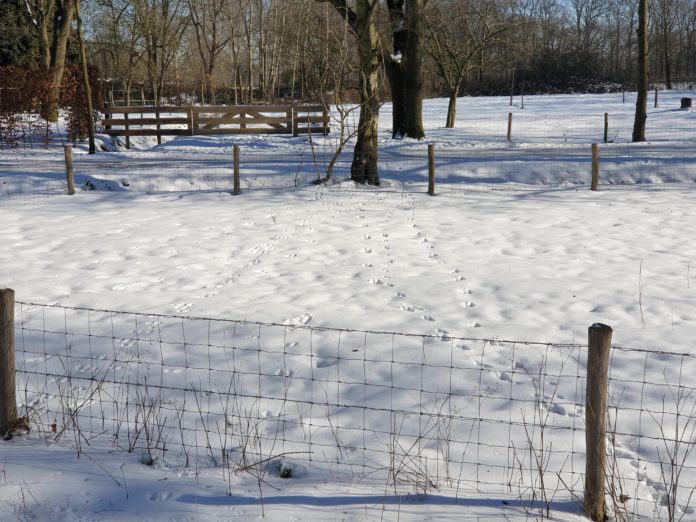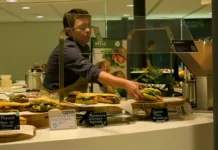The past week’s snowy days were great to look for animal tracks in the snow: tiny robins’ hoping footprints, walking trails of magpies and jackdaws, jumping rabbit and hare’s tracks, or a squirrel running on the snow from one tree to the other.
Now with the excitement of the snow and ice gone, we might feel there is nothing going on outside. That is far from being true! So, I invite you to go on a late-winter treasure-hunt. Go outside for a walk in your nearest city park and find these four natural treasures!
Early bloomers – snowdrops and crocuses
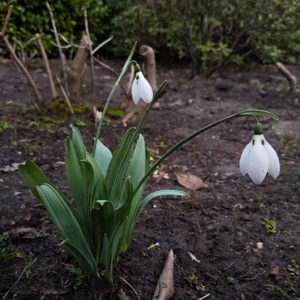
Some wildflowers start to bloom as soon as early February, such as the delicate snowdrops and colourful purple crocus. I saw the first snowdrops flowers already in the first week of February in the Dommelplantsoen and in the Genneperpark. This was before the heavy snowfall of last week. Still, they are resilient little plants, resisting the cold temperatures and blooming again as soon as the first snow starts to melt.
Mosses
Have you ever noticed how some tree trunks turn green during winter? No, the tree are not sick, they just have mosses growing on them. (But fear not, the tree is not harmed.)
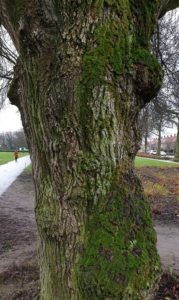
Mosses are tiny, primitive plants. Because they lack a vascular system, they don’t grow more than a few centimetres high. They reproduce by spores and not by seeds. Their roots do not absorb nutrients as most plants do; their function is to fixate the moss to a substrate.
Still, mosses are everywhere! They grow in tree trunks and branches, on rocks, walls and roofs, between the grass and even on the ground.
So, why do we only notice them during late-autumn and winter? Because mosses need moderate temperatures and high levels of humidity in the air to survive, and such conditions tend to occur during these seasons.
Lichens
Just like mosses, lichens grow in diverse places; and are most prevalent between autumn and spring. Even though some lichens may look like small plants or mosses, they are neither and are weirder organisms compared to both.

In reality, lichens are actually a combination of two different organisms! They are symbiotic in the relationship (meaning both species gain from it) between small species of fungi (a.k.a. mushrooms) and different algae or bacteria. Lichens adopt different shades of green, depending on the algae or bacteria present. Many lichens grow flat along a surface, so you might have to pay attention to see them.
So, take a closer look at that green tree trunk or that colourful rock and marvel at the miniature world created by mosses and lichens.
The magpie’s nests
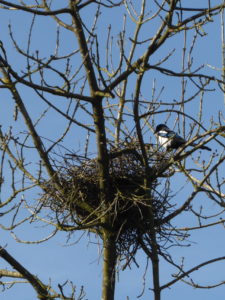
Magpies build their nests as closer to the top of the tree canopy as they can. The nests are remarkably large, given the size of these birds – bigger nests are more robust and thus capable of withstanding the strong wind felt up there. It also means that magpie’s nests don’t get easily destroyed while they are not in use, such as during autumn and winter, turning them into prominent features in the winter landscape.
When the breeding season starts, they add even more material to the nest – to make it comfortable during all those days hatching eggs – which means they get larger every year.
Garden bird count: the results
An endnote about the results of the Nationale Tuinvogeltelling. There were some great ones: this year’s national garden bird count had more than DOUBLE of the participants of last year! Almost 200.000 people across the country (more than 1% of the population!) counted a record number of more than 2.7 million birds! Just as last year, the most common garden birds were the House Sparrow, the Great Tit and the Blue Tit. Together they accounted for 40% of all the birds seen (a little over 1.1M).
Here in Eindhoven, more than 20.000 birds were counted by 1500 persons. Again, TWICE as much as last year! Impressive! The two most common garden birds in Eindhoven were also the House Sparrow and the Great Tit. However – just like last year – the Jackdaw stole the 3rd place (they are pretty common here, indeed)!
Full results can be found here
Did you take part in the Tuinvogeltelling this weekend? What did you encounter in your garden, backyard or balcony?
For Eindhoven News: Nuno Curado
A wildlife ecologist, fascinated with urban nature: the wild animals and plants that live with us in the cities! He is the person behind Wild Eindhoven: a one-person company on a mission to help everyone discover nature in the city, from city parks to our home balconies!


